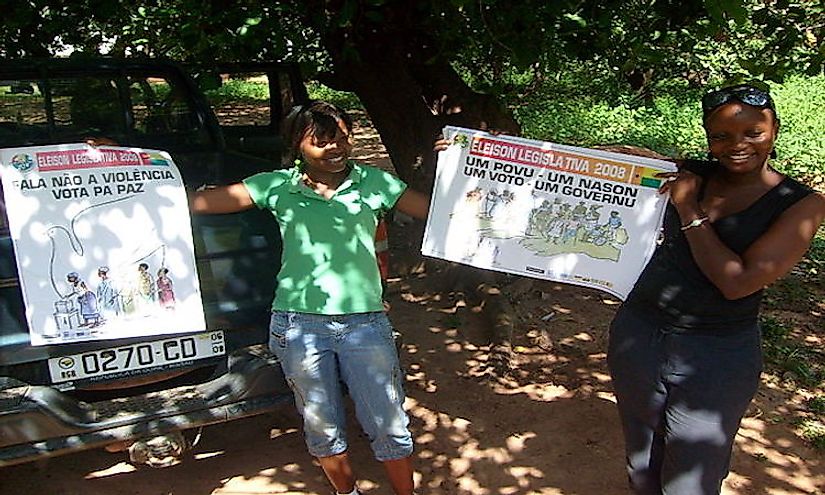What Languages Are Spoken In Guinea-Bissau?

History Of Guinea-Bissau
Guinea-Bissau is a West African country located on the Atlantic coast. The country has a long history of kingdoms and colonialism. Much of the northeastern area of the country was ruled by the Kaabu Empire, which lasted from 1537 to 1867. Other areas were under the Mali Empire, which held power between around 1230 and 1600. The Portuguese Empire came into this region and established Portuguese Guinea, a colony, in 1474. This country declared its independence in September of 1973, which was not recognized until 1974. At this time, Portuguese Guinea became Guinea-Bissau and has a population of approximately 1.69 million. Because of its history and ethnic diversity, residents of this country speak a wide range of European and native languages. This article takes a look at the languages spoken in Guinea-Bissau.
Official Language Of Guinea-Bissau
Because of its long colonial history, the official language Of Guinea-Bissau remains Portuguese. During this time it was the principal language of government administration and national communications. However, only between 11% and 14% of the population can speak this language today. These individuals represent the most elite and highly educated of the country. Because of its limited range, today, Portuguese is spoken primarily as a second language, and its use is concentrated around the capital.
Native Languages Of Guinea-Bissau
The most widely spoken language in Guinea-Bissau is Guinea-Bissau Creole, a Portuguese-based creole language. Although not the official language, it is the actual lingua franca. This is because it is spoken as a first language by approximately 15% of the population and is the second language of about 50% of Bissau-Guineans. Guinea-Bissau Creole is used in Parliament, public services, informal communications, and entertainment.
Balanta belongs to the Bak language family and is spoken by the Balanta indigenous people. It has around 510,000 speakers. This language is split into two dialects: Balanta-Kentohe and Balanta-Ganja.
Fula is the first language of the Fula people and belongs to the Atlantic branch of the Niger-Congo language family. Its use is spread over 20 countries within West and Central Africa. In Guinea-Bissau, approximately 16.3% of the population speaks this language.
Mandjak is spoken by 11.3% of the population. It belongs to the Bak language family and is divided into several dialects.
Mandinka belongs to the Mande branch of the Niger-Congo language family. Its use is concentrated in the northern region of the country, where approximately 10.8% of the country’s population speaks this language.
Papel is the first language of the Papel ethnic group, who live throughout Guinea, Guinea-Bissau, and Senegal. This language is closely related to the Mandjak language. Roughly 8.8% of the population speaks Papel as their native language.
These native languages represent just a portion of those spoken in this country. Many other native languages can be heard throughout Guinea-Bissau. However, each of these has less than 50,000 speakers.
Main Foreign Language Of Guinea-Bissau
The main foreign language of Guinea-Bissau is French. Public schools teach French as a second language throughout the country. It has grown in importance because of the country’s close proximity to several French-speaking countries. Guinea-Bissau belongs to the International Organization of La Francophonie, an organization that represents countries where French is an important part of the culture.







